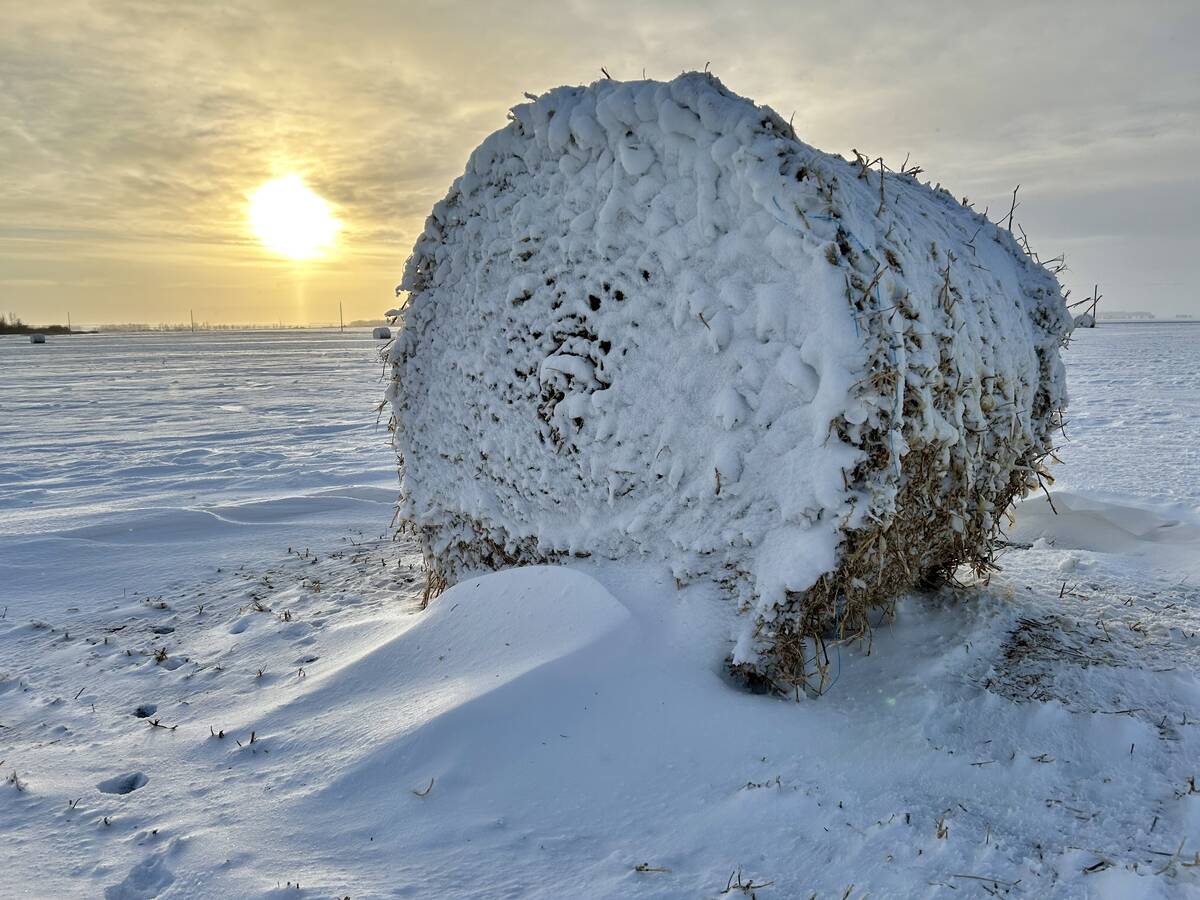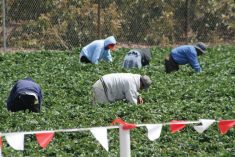Forget the old cliché. There are actually three things you can count on in life: Death, taxes, and the inevitability of high fuel costs.
It’s difficult to measure how much farmers on average spend on fuel in any given growing season, but they know where it hurts them: In the wallet.

“Farmers really don’t get to measure their fuel performance in a miles-per-gallon, linear way like a trucker,” said Don Smith, vice-president of petroleum with UFA.
But just because it’s hard to measure fuel inefficiency doesn’t mean it’s not there. The good news is there are plenty of accessible practices to help improve efficiency. They range from the tried and true (‘gear up, throttle down,’ proper tire inflation) to ones you may not be aware of (the colour of storage tanks, optimizing field routes).
Here are some fuel-saving tips gaining traction in the farming community:
Think twice about fuel tanks
Producers can start losing fuel before it’s pumped, said Smith. Positioning of storage tanks, lack of maintenance, and even the colour of your tank can all be culprits.
“If you can position your tanks where they’re not in direct sunlight all the time and not painted black, it can make a big difference, especially where it comes to gasoline storage,” he said. “White tanks reflect sunlight and do not retain the heat which causes evaporation and condensation in gasoline.”

Regular tank maintenance is always recommended, said Smith.
“Water is a naturally forming product in diesel, which means you have to deal with condensation. Make sure to include drawing the water off the bottom of the tank as part of your maintenance practices. It also helps to keep your tank full and not super low.
Plan field and road patterns
Planning field routes to minimize turning can make a difference, too, said Smith.
“Turning takes a lot of power. It’s the least operationally effective part of a run on a tractor. It really doesn’t matter whether you are seeding or spraying — the less turns you make, the better off you’re going to be.”
Read Also

Prairie winter snowfall forecast 2025-2026
How much snow should farmers in Alberta and elsewhere on the Canadian Prairies expect for the rest of December 2025 and into January-February 2026?
It helps to plan out your day. When it comes to road travel, paved roads — not surprisingly — are better for equipment than gravel.
“Plan out your route, making sure that you’re taking the most effective path if you have to go in between properties.”
Roads on your own property offer some flexibility that public roads don’t. For example, if you own cattle, consider installing Texas gates (a.k.a. cattle guards) instead of gates, said Smith.
“(With guards) you’re going to spend less time idling while getting out of the tractor and opening and closing gates.”
Use the right tractor for the job
The concept is simple enough: Use a smaller tractor for lighter loads and a bigger one for heavier loads. Otherwise, you’re wasting fuel.
But how do you know for sure what constitutes an optimal tractor/load combination?
There is no simple formula for this, but Smith has a rule of thumb.
“If you are working your piece of equipment in the 50 to 75 per cent of power range then you are probably using the right piece of equipment. If you fall below 50 per cent of the power range for too long — or if you are over 75 per cent for too long — you are either not using the right piece of equipment or you need to change your gearing.”
Gear up, throttle back
Most crop farmers are familiar with this oldie but goodie, but it’s worth a refresher.
‘Gear up, throttle back’ is a practice used when the load being pulled requires less than 70 per cent of a tractor’s power. In these cases you can shift to a higher gear and throttle back the power, slowing the engine speed while maintaining the ground speed you want.
The practice is included in just about every discussion and article about farm fuel savings. There’s a reason for that: It works. Although fuel savings can vary by type of equipment and the ground it’s moving over, they’re usually considerable.
“Typically, the savings can be anywhere from 10 to 15 per cent,” said Smith.
Correct inflation pays off
Here’s another common practice familiar to most farmers (and to most car drivers, for that matter). Keeping tires on tractors and other equipment at the manufacturer’s recommended psi helps ensure the best traction, lowest rolling resistance, and, ultimately, fuel savings.
It’s an easy thing to do at the start of the season, but maintaining correct tire pressure as things get hectic may prove more challenging. Be consistent with your monitoring, said Smith.
“If you need air, put more air in. But be careful because too much air is going to be inefficient as well as too little.”
Prevent tire slippage
Using proper tractor ballasting to reduce wheel slip also reduces fuel consumption. A simple sight check can determine if you are experiencing slippage, said Smith.
“Examine your tracks on the ground to see what kind of tire marks you’re making. This helps you judge whether your tires are slipping or not. From there, adjust your ballast accordingly. You don’t want to weigh your equipment down too much on the drive wheels so that they are sticking too far into the ground.”
Premium payoff
A few key maintenance practices include regularly checking brakes and lubricants as well as changing out your filters, especially on dry, dusty days. Smith takes these concepts a step further, warning farmers not to cheap out on products such as oil, other lubricants and, yes, fuel.
“I’m a big proponent of premium products,” he said. “I know sometimes they cost a little more off the shelf, but generally they’re worth it. If you look at what you are actually spending on a litre of fuel or lubricant, buying premium will more than make that difference back in not only fuel consumption but ongoing maintenance costs.
“Oftentimes farmers say, ‘That pail of lubricant is $5 more and I don’t want to spend that.’ That is not the long-term view you should be taking considering how much people spend on their equipment. As you know, combines aren’t cheap. And frankly, when you go with synthetic lubricant you’re also reducing the amount of oil changes you’re going to have to do.”
If possible, buy new
This recommendation might grate on farmers who are already cash strapped, but if you can manage it, buying new equipment could be your best bet for fuel savings, said Smith.
“We’ve seen some pretty dramatic changes over the last probably 20 years in terms of fuel efficiency on farm equipment,” he said.
“Some people may not be in the position to afford new equipment; everybody has to operate within their own budget. But if you can, these can be some very effective investments. There’s equipment these days with a lot more horsepower and a lot more torque and yet they can deliver that performance while consuming a lot less fuel.”
















